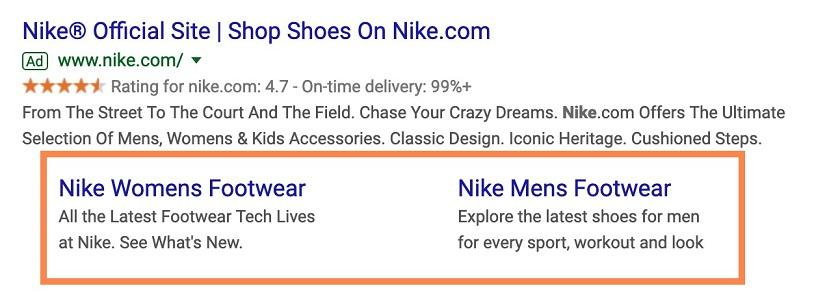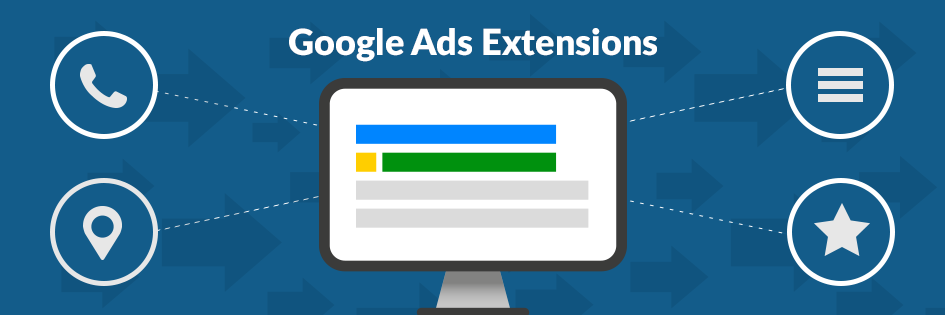Effective Strategies to Improve CTR for Better Ad Performance Use relevant keywords, focus on quality rather than quantity, target the right audience, use visuals, include a call to action, optimize for mobile, use A/B testing, create a sense of urgency, and measure success.Â
Implement remarketing campaigns, target the right devices, and experiment with different ad formats. Optimize website load time, use remarketing campaigns, and monitor your campaign performance.
How CTR Works And Why It’s Important
Click-through rate is one of the best ways to gauge how effective an ad is in digital marketing. This metric shows how well an ad resonates with its target audience by comparing how many clicks it gets to how many impressions it gets.
What’s a click-through rate (CTR)?
To calculate click-through rate, divide the number of clicks by the number of impressions and multiply the result by 100.
What CTR means for campaigns
When the CTR’s high, it means the ad’s messaging, targeting, and creative are aligned with the audience’s expectations.
CTR Industry Standards
Though “good” CTRs are subjective, they generally vary from industry to industry and from ad format to ad goal. It’s possible that search ads have a different standard CTR than social media ads.
High CTR impacts conversions and revenue
Higher CTRs often lead to more conversions, especially when you pair them with a compelling offer.
Improve Your CTR With Keyword Optimization

How to Improve Your Ad Click-Through Rate (CTR) in Google Ads
Getting more clicks with keywords
A keyword’s role in boosting CTR is to make sure ads are shown to users who are actually interested.
Keywords that have high intent
These are keywords that indicate users are close to making a purchase or are actively researching a specific product.
Use specific, targeted keywords
With targeted keywords, your ad reaches a specific audience. Keywords with broad search terms can dilute your traffic and hurt your CTR, while keywords with specific search terms make it easier to connect with qualified people.
Make sure your keywords aren’t too broad
Broad keywords can attract users who might not be interested in your product, resulting in low CTR and wasted ad spending. Make sure your keywords are aligned with your ad’s intent and audience expectations to get more relevant clicks.
Keyword long tails
Keywords with a long tail have fewer competitors. With them, you can target niche audiences with particular needs, which leads to higher click-through rates.
The Keyword Planner tool in Google Ads
Google’s Keyword Planner helps advertisers find relevant keywords and gives them metrics like search volume. Make your ad more visible and CTR friendly by choosing keywords with high search intent.
CTR Optimization With Ad Copy

How to Improve Your Ad Click-Through Rate (CTR) in Google Ads
What makes an ad compelling
The ad copy is the gateway to user engagement. It’s important to craft ad copy that’s clear, concise, and persuasive. Having strong ad copy not only gets people’s attention, but also encourages them to click on it.
Concise and Clear Ad Copy
Make sure you keep your message focused and don’t overuse words. Advertising that communicates benefits and value succinctly will get more engagement. Make sure you explain why the product or service is useful and how it can help you.
Including a strong CTA
A compelling CTA directs users on what to do next, so they’re more likely to click. A phrase like “Shop Now,” “Get Started,” or “Learn More” gives clear instructions, motivating users to act.
Make sure you don’t use jargon and unnecessary words
It’s easy to get confused or turn people away with overly complicated language. By using simple, straightforward language, the message is also more accessible, so more people will see the ad.
Power words for persuasion
The use of powerful words like “fast,” “you,” “now,” or “limited time” can make ad copy more persuasive. Those words make users feel like the offer is exclusive or immediate, which makes them click.
Ad Copy Triggers
A well crafted emotional ad copy can boost CTR by connecting with users on a deeper level. You can get users clicking and exploring by using words that evoke curiosity, excitement, or urgency.
Testing Ad Extensions

How to Improve Your Ad Click-Through Rate (CTR) in Google Ads
What Ad Extensions Do for CTR
Advertiser extensions increase ad visibility and encourage clicks by providing extra details about your business or offer. By making ads more informative and accessible, they can improve click-through rates.
The types of ad extensions

How to Improve Your Ad Click-Through Rate (CTR) in Google Ads
Depending on your campaign goals, you can customize your ad extensions. The most common types are sitelink extensions, call extensions, location extensions, and price extensions.
Reviews for customers
Including customer reviews in ad extensions increases credibility and trust, which can boost CTR. Positive feedback, which provides social proof of the value of a product, makes users click more often.
Extensions for Location and Price
Users can find nearby stores with location extensions for businesses with physical locations. The price extension can help users compare products and drive clicks from users looking for pricing transparency.
Trying out different ad extensions
There are different types of extensions, so testing them can help you figure out which ones work best for your campaign. Trying different combinations can help you figure out which ones work best.
Optimizing CTR with A/B tests
Using A/B testing, advertisers can test ad copy, keywords, and extensions to find the most effective ones. Data driven decisions are a great way to refine your approach, identify strengths, and increase conversions.
Targeting And Placement Of Ads

How to Improve Your Ad Click-Through Rate (CTR) in Google Ads
Boost your CTR with audience targeting
To improve CTR, you have to reach the right people. You’ll get more engagement from ads when you target users with genuine interest in the product or service.
Targeting Demographics
You can narrow down audiences by age, gender, income, and more with demographic targeting. Users who are more likely to be interested in the offer are targeted with the ad.
Interests and behaviors of users
Users can target ads based on their interests and behaviors on Google Ads and Facebook, which can drive higher CTRs. You’re more likely to get engagement if you target people with similar interests.
Positioning ads to get the best results
When you place your ads on specific websites, social media, or the Google Display Network, your CTR will go up since your ad will appear where your audience is most active.
Targeting with negative keywords
By using negative keywords, you can avoid showing ads in irrelevant searches. As a result, users with genuine interest are more likely to see your ads, improving your CTR and reducing wasted money.
Using Google Ads targeting options
Google Ads offers a variety of targeting options, from in market audiences to remarketing lists. Having these options helps you reach users who have specific needs or interests, resulting in more relevant clicks and a higher click-through rate.
Creating Ads And Messaging

How to Improve Your Ad Click-Through Rate (CTR) in Google Ads
Headlines That Grab Your Attention
Use eye catching, compelling language in your headline because it’s often the first thing people notice. A strong headline increases the chance of getting clicked, so CTR goes up.
Here are some good headlines
The headlines like “Get 50% Off Today Only! ” or “Unlock Your Free Trial” catch attention and create urgency, making users more inclined to click and explore.
The power words in headlines
Adding urgency to your ads with words like “Now,” “Free,” “Exclusive,” and “Limited” makes them more appealing and increases click-through rates.
Creative Ads That Stand Out

How to Improve Your Ad Click-Through Rate (CTR) in Google Ads
Advertising that uses unique visuals or design elements captures user attention and encourages clicks.
Messages that convey benefits
The message should focus on how the product or service will improve users’ lives or solve their problems, not just what it can do. Users will engage with this approach because it appeals to their needs.
Landing pages: Why they’re important
It’s easier to convert people when they have a seamless experience from ad to landing page. Providing users with a cohesive and positive experience on the landing page should reinforce the message in your ad.
Simple and direct landing pages
It’s important to keep landing pages simple so users don’t get overwhelmed. Make sure you get your message across clearly, emphasize key points to keep users engaged.
Make your landing pages stand out with a strong call to action
Your landing page should encourage users to take the next step, whether that’s buying, signing up, or learning more. User understands what they need to do with a clear CTA.
Landing page overload
It’s easy to get overwhelmed with too much info. Having a streamlined design and focused content gets users to take action.
Optimize Your Landing Pages With Google’s Tools

How to Improve Your Ad Click-Through Rate (CTR) in Google Ads
Various tools are available in Google Ads to help you improve landing page performance and maintain high conversion rates.
Rotation and scheduling of ads
Putting ads on your site. The more active your target audience is, the better your chances are of getting them to engage. When you schedule ads during peak hours, you’ll reach users at the right time and boost CTR.
Keep your ads fresh with ad rotation
Regular rotation prevents ad fatigue, keeping content fresh and engaging. In the long run, this strategy helps maintain interest and improve CTR.
Getting the most out of your ads by scheduling and rotating them
With tools like Google Ads, advertisers can schedule and rotate ads to optimize campaigns.
Ad Timing
Ad visibility can increase engagement if you know when to show them. Find out when your audience clicks the most by experimenting with different timings.
Trying out different ads with rotation
When you rotate different ads, you’re able to identify the best performing versions, giving you insights into what makes ads perform better.
Ad groups and campaigns
Ad organization helps you target specific audiences more effectively, making ads more relevant to each group and boosting CTRs.
Ad groups for similar products
When similar products or services are grouped, tailored messaging increases relevance and appeals directly to users interested in those items, which improves CTR.
Structuring campaigns around specific goals
Clearly define your objectives for your ad campaigns, like brand awareness or conversions. With this focus, every ad is optimized for its intended purpose, boosting performance and conversions.
Managing Your Adwords Campaigns With Google Adwords

How to Improve Your Ad Click-Through Rate (CTR) in Google Ads
Google Ads makes it easy to manage ad groups and campaigns, so you can target ads efficiently.
Better CTR with regular monitoring
Ad performance can be monitored in real time to improve CTR. Keeping track of metrics like click-through rate, conversions, and bounce rate helps you make improvements.
Utilizing Google Ads Monitoring
CTR can be improved with Google Ads’ analytics tools, which provide valuable data on campaign performance.
Making decisions with data
Ad analytics give you a roadmap for optimizing your ads. When advertisers understand what strategies drive CTR, they can focus on the ones that work and eliminate those that don’t.
Using A/B testing insights
Using A/B testing will help you refine your ad copy, images, and keywords. Data backed changes can improve CTR for advertisers.
Adding extra information to ads
Ad extensions add value by providing more information, making ads more appealing and more likely to be clicked.
Conclusion
You need a high CTR to maximize ad performance, improve engagement, and drive revenue. From keyword targeting to ad copy optimization to audience segmentation and A/B testing, you can boost CTR and grow your business.Â
By focusing on optimizing your campaigns, you can increase your CTR and maximize your ROI. With the right combination of strategies, you can drive better results and maximize your advertising spend. You can also track your results to measure the success of your campaigns.Â
This can help you adjust your campaigns accordingly and ensure you are getting the most out of your advertising budget.


